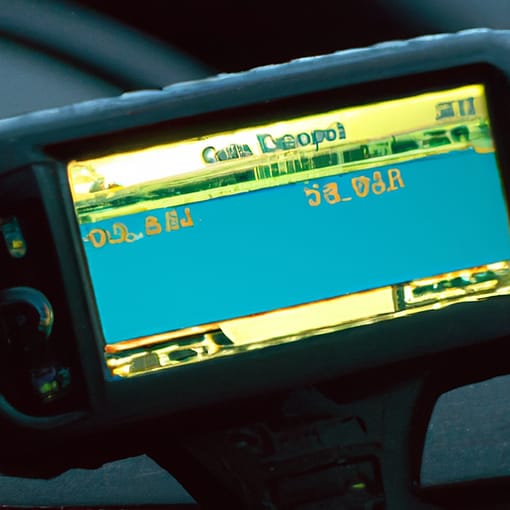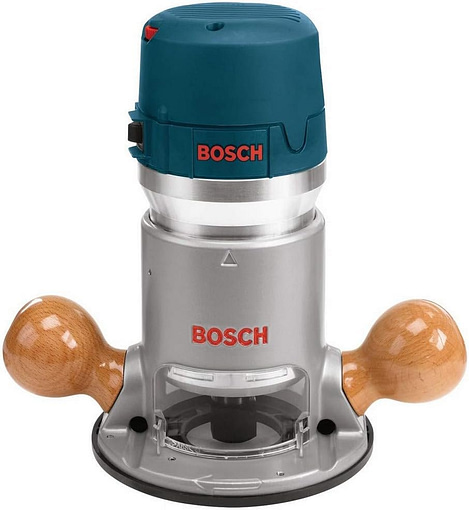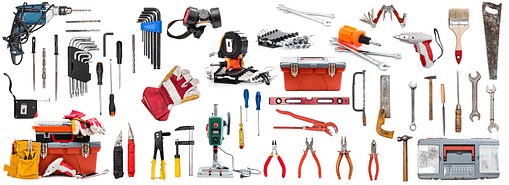So you’ve found yourself with an annoying dent on your car, and you’re wondering if there’s a simple solution to fix it yourself. That’s when you stumble upon car dent pullers, devices specifically designed to rectify those pesky dents. But before you jump into making a purchase, you’re left pondering the question – are car dent pullers easy to use? Well, in this article, we’ll explore the answer to that very question and provide you with some insight into the world of car dent pulling. Whether you’re a seasoned DIY enthusiast or just looking for a simple fix, we’ve got you covered.
1. What is a Car Dent Puller?
A car dent puller is a tool used to remove dents from a vehicle’s body without the need for expensive professional repairs. It is designed to gently and effectively pull the dent back into its original shape, restoring the appearance of the vehicle. Car dent pullers come in various types and styles, each with its own unique method of operation.
2. Types of Car Dent Pullers
2.1 Traditional Dent Pullers
Traditional dent pullers, also known as hand-operated dent pullers, are straightforward and easy to use. They consist of a handle, a suction cup, and sometimes a pulling bar. These pullers work by creating a vacuum between the suction cup and the surface of the car, allowing you to pull the dent out by applying pressure to the handle. Traditional dent pullers are suitable for small to medium-sized dents and are commonly used by DIY enthusiasts.
2.2 Pneumatic Dent Pullers
Pneumatic dent pullers are powered by compressed air and are ideal for larger and more stubborn dents. These pullers use a suction cup attached to a pneumatic gun, which creates a strong pulling force to remove the dent. Pneumatic dent pullers offer increased power and efficiency compared to traditional pullers, making them a popular choice among professional auto body repair technicians.
2.3 Slide Hammer Dent Pullers
Slide hammer dent pullers, also known as T-bar dent pullers, utilize a sliding weight and a metal rod with a hook or loop attachment. This type of dent puller works by attaching the hook or loop to the dent and then using the slide hammer to apply a pulling force, gradually pulling the dent out. Slide hammer dent pullers are effective for a wide range of dent sizes and can be used on both large and small dents.
2.4 Glue Pullers
Glue pullers are a relatively new and innovative type of dent puller that uses special adhesive tabs and hot glue to remove dents. These pullers work by applying the hot glue to the adhesive tab, sticking it to the dent, and then using a pulling tool to pull the dent out. Glue pullers are versatile and can be used on different types of dents, including shallow and wide dents. They are particularly useful for dents on panel edges and areas where traditional pullers may not be effective.
2.5 Dent Repair Kits
Dent repair kits typically combine various dent puller tools into a single package, providing users with a comprehensive solution for repairing dents. These kits often include a selection of traditional dent pullers, slide hammer dent pullers, glue pullers, and other tools necessary for the dent removal process. Dent repair kits are convenient for DIY enthusiasts or individuals who want to have all the necessary tools at hand for different types of dents.
3. The Process of Using a Car Dent Puller
Using a car dent puller involves several steps to ensure successful dent removal. Let’s explore the process in detail:
3.1 Assessing the Damage
Before using a car dent puller, it is crucial to assess the damage to determine whether it is suitable for DIY repair or if professional help is needed. Evaluate the size, depth, and location of the dent. Small, shallow dents that are easily accessible are generally good candidates for DIY dent removal using a car dent puller. However, deep or complex dents may require professional assistance.
3.2 Preparing the Surface
To enhance the effectiveness of the dent puller, it is essential to prepare the surface. Clean the area around the dent using mild soap and water to remove any dirt, debris, or wax. Ensure that the surface is dry before proceeding with the dent removal process. Proper surface preparation helps the puller to adhere securely and increases the likelihood of successful dent removal.
3.3 Applying the Dent Puller
Once the surface is clean and dry, follow the manufacturer’s instructions to apply the chosen dent puller. This may involve attaching a suction cup, adhesive tab, or hook to the dent, depending on the type of puller being used. Ensure a secure attachment to the dent, as a loose connection may hinder the effectiveness of the puller.
3.4 Pulling the Dent
With the dent puller properly attached, it is time to start pulling the dent. For traditional dent pullers, apply steady pressure to the handle, gradually pulling the dent out. Pneumatic dent pullers and slide hammer dent pullers often require a quick and forceful motion to generate the necessary pulling force. Follow the instructions specific to the dent puller being used and make sure to apply the appropriate pulling technique.
3.5 Releasing the Dent Puller
After successfully pulling the dent out, carefully release the dent puller from the surface. Avoid any sudden jerks or movements that could damage the paint or cause the dent to reappear. Once the dent puller is removed, inspect the area to ensure the dent has been fully resolved. If necessary, repeat the process or explore alternative techniques for further dent removal.
4. Factors that Affect Ease of Use
The ease of using a car dent puller can vary depending on several factors. Here are some important considerations to keep in mind:
4.1 Dent Size and Depth
The size and depth of the dent can significantly impact the ease of using a car dent puller. Smaller, shallower dents are generally easier to pull out compared to larger, deeper dents. Deeper dents may require more force and specialized dent pullers to effectively remove them.
4.2 Accessibility of the Dent
The location and accessibility of the dent play a role in the ease of dent removal. Dents in more open and accessible areas, such as flat panels, are typically easier to address with a dent puller. Dents in harder-to-reach areas, such as curved or creased panels, may require more effort and skill to access and successfully remove the dent.
4.3 Experience and Skill Level
An individual’s experience and skill level with using car dent pullers can greatly impact the ease of dent removal. Beginners may find it initially challenging to apply the correct pulling technique and achieve optimal results. With practice and familiarity, the process becomes easier, and the chances of successful dent removal improve.
4.4 Quality of the Dent Puller
The quality of the dent puller itself can also influence the ease of use. Higher quality dent pullers are often designed with user-friendly features, optimal materials, and reliable mechanisms. Investing in a reputable and well-designed dent puller can make the dent removal process more straightforward and efficient.
5. Advantages of Using Car Dent Pullers
Using car dent pullers offers several advantages, making them a popular choice for dent removal:
- Cost-effective: Car dent pullers provide an affordable alternative to costly professional repairs, potentially saving you a significant amount of money.
- Convenience: With a dent puller, you have the freedom to remove dents at your convenience without the need to schedule appointments or wait for repair shops.
- Time-saving: By utilizing a dent puller, you can quickly address minor dents and restore your vehicle’s appearance without extensive wait times.
- Preserves original paint: Dent pullers work by gently pulling the dent out rather than using abrasive methods that can damage the paint. This preserves the original finish of the vehicle.
- Versatility: Different types of dent pullers cater to various dent sizes and types, allowing for a wide range of dent removal possibilities.
6. Limitations of Car Dent Pullers
While car dent pullers offer many benefits, it is important to be aware of their limitations:
- Size and depth restrictions: Car dent pullers are most effective for small to medium-sized dents. Deep or complex dents may require professional repair or alternative dent removal techniques.
- Paint damage: Improper use of dent pullers can result in paint damage, especially if excessive force or incorrect techniques are applied.
- Limited access: Certain areas of a vehicle may be challenging to access with a dent puller, compromising its effectiveness on hard-to-reach dents.
- Skill requirement: Using a car dent puller effectively requires some level of skill and technique. Beginners may need to practice and gain experience to achieve satisfactory results.
7. Common Mistakes to Avoid
To ensure successful dent removal, it is important to avoid common mistakes that can hinder the effectiveness of a car dent puller:
7.1 Using Excessive Force
Applying excessive force while using a dent puller can cause paint damage or even worsen the dent. It is essential to follow the manufacturer’s instructions and apply the appropriate amount of force and technique.
7.2 Neglecting Proper Surface Preparation
Failing to properly clean and dry the surface before attaching the dent puller can compromise its effectiveness. Dirt, debris, or wax can create a barrier between the puller and the surface, reducing its pulling power.
7.3 Not Following Manufacturer Instructions
Each dent puller may have specific instructions and guidelines for optimal use. Ignoring or deviating from these instructions may lead to subpar results or damage to the vehicle.
7.4 Rushing the Process
Patience is key when using a car dent puller. Rushing the process can result in ineffective dent removal or accidental damage to the vehicle. Take the time to properly assess the dent, prepare the surface, and apply the puller with care.
8. Tips for Using Car Dent Pullers
To maximize the effectiveness of a car dent puller, consider the following tips:
8.1 Clean and Dry the Area First
Ensure that the area around the dent is clean and free from any dirt, debris, or wax. Use mild soap and water to gently clean the surface, and allow it to dry completely before attaching the dent puller.
8.2 Use the Proper Pulling Technique
Different dent pullers may require specific pulling techniques for optimal results. Familiarize yourself with the recommended pulling technique outlined by the manufacturer and apply it accordingly.
8.3 Practice on a Small Dent First
If you are new to using a car dent puller, it is advisable to practice on a small dent first. This allows you to familiarize yourself with the tool and technique before tackling larger or more noticeable dents.
8.4 Use Heat for Stubborn Dents
For particularly stubborn dents that are resistant to pulling, applying gentle heat using a heat gun or hairdryer can make the metal more pliable. The heat helps the dent puller to more effectively reshape the dent.
8.5 Seek Professional Help if Needed
If you encounter a dent that is beyond your skill level or cannot be successfully removed with a car dent puller, it is best to seek professional assistance. Professional auto body repair technicians have the expertise and specialized equipment to tackle more challenging dents.
9. Safety Precautions
When using a car dent puller, it is crucial to prioritize safety. Consider the following precautions:
9.1 Use Safety Glasses and Gloves
Protective eyewear and gloves should be worn during the dent removal process to safeguard against any potential injury or contact with harmful substances.
9.2 Avoid Using Excessive Force near Fuel Components
Be cautious when working near fuel components of the vehicle. Using excessive force or creating sparks in close proximity to fuel sources can result in accidents or fires.
9.3 Be Cautious with Hot Glue
If using a glue puller, exercise caution when handling hot glue. Avoid direct contact to prevent burns, and allow the glue to cool and harden before attempting to pull the dent.
9.4 Work in a Well-Ventilated Area
Ensure proper ventilation when using adhesive-based dent pullers, as the fumes from the glue can be harmful if inhaled in an enclosed space. Open doors or windows or work in a garage with suitable ventilation.
10. Conclusion
Car dent pullers provide a convenient and cost-effective solution for removing dents from vehicles. With various types of dent pullers available, each catering to different dent sizes and types, individuals can choose the most suitable option for their specific dent removal needs. While there may be limitations and challenges associated with using dent pullers, understanding the process, following proper techniques, and exercising caution can lead to successful dent removal and the restoration of a vehicle’s appearance.
See Also
# Home Car Dent Puller – Our Pick
# Are Home Car Dent Pullers Any Good?










